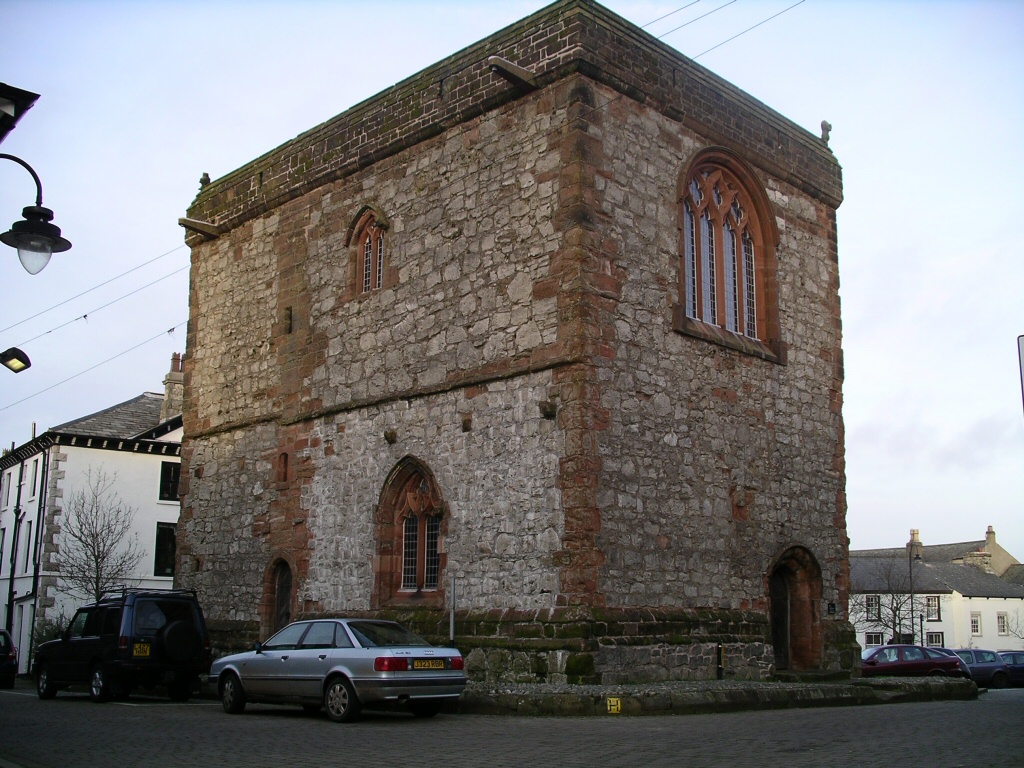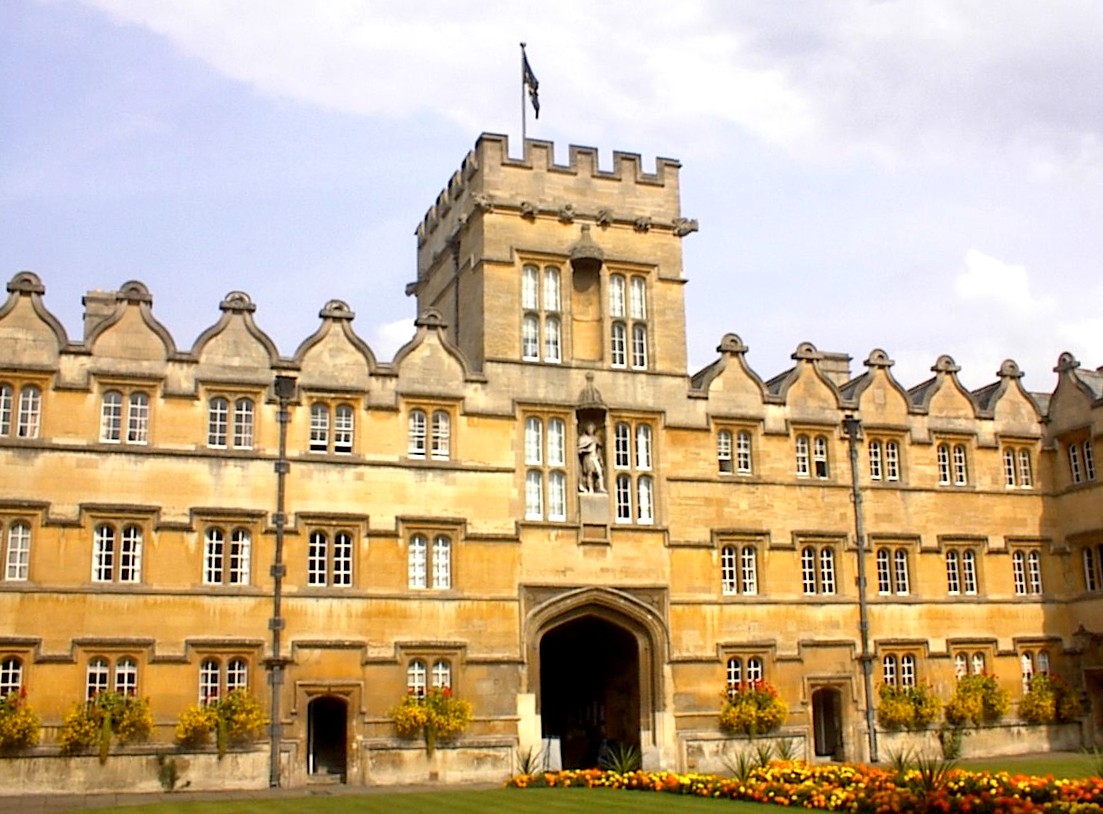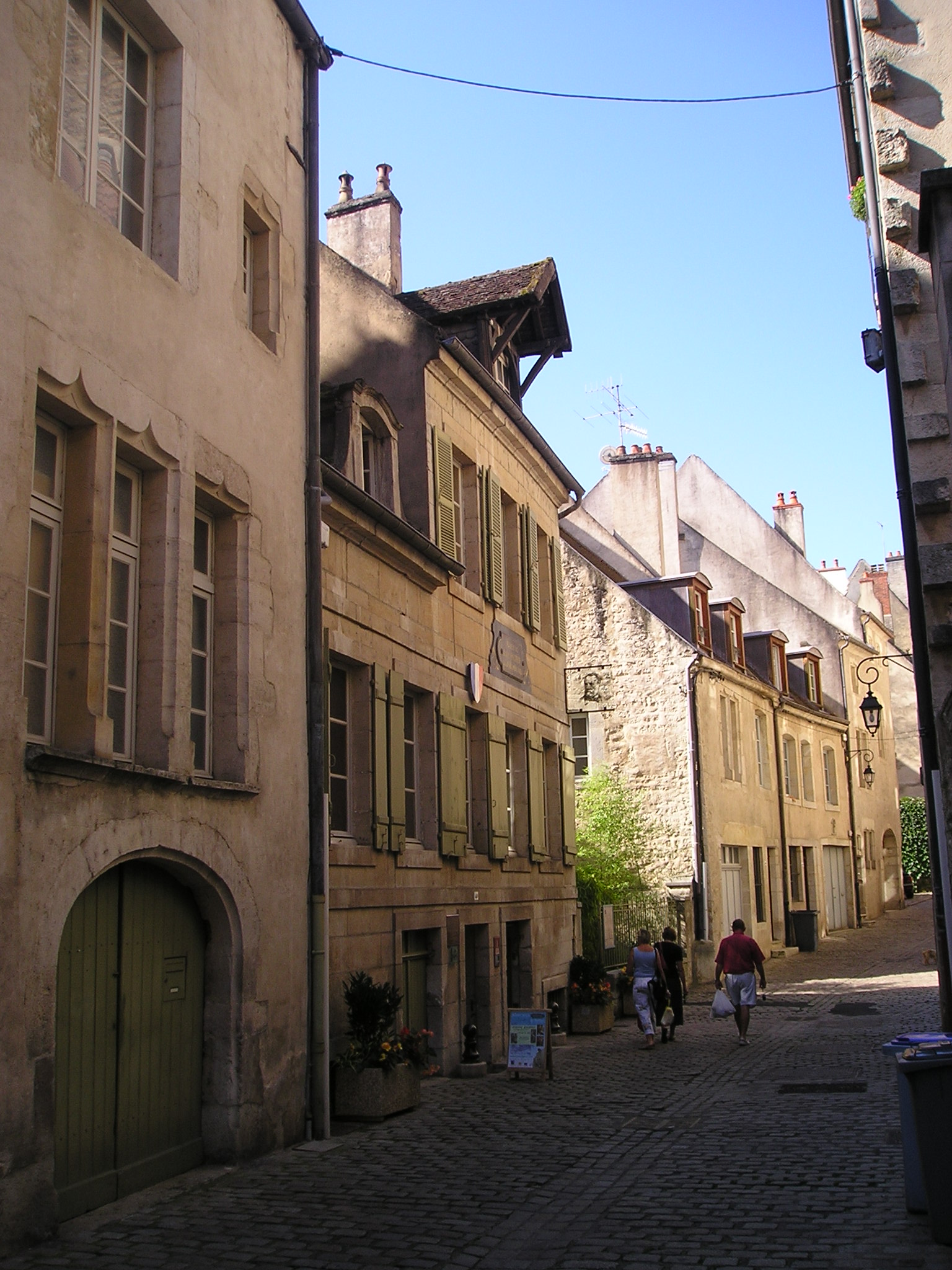|
E.B. Ford
Edmund Brisco "Henry" Ford (23 April 1901 – 2 January 1988) was a British ecological geneticist. He was a leader among those British biologists who investigated the role of natural selection in nature. As a schoolboy Ford became interested in lepidoptera, the group of insects which includes butterflies and moths. He went on to study the genetics of natural populations, and invented the field of ecological genetics. Ford was awarded the Royal Society's Darwin Medal in 1954. In the wider world his best known work is ''Butterflies'' (1945). Education Ford was born in Dalton-in-Furness, near Ulverston, in Lancashire, England, in 1901. He was the only child of Harold Dodsworth Ford (1864–1943), a classics teacher turned Anglican clergyman, and his wife (and second cousin) Gertrude Emma Bennett. His paternal grandfather, Dr Henry Edmund Ford (1821–1909), was a "professor" (= teacher) of music at Carlisle and the organist of Carlisle Cathedral from 1842 to 1902. Ford was educate ... [...More Info...] [...Related Items...] OR: [Wikipedia] [Google] [Baidu] |
Dalton-in-Furness
Dalton-in-Furness is a town and former civil parish in the Borough of Barrow-in-Furness, Cumbria, England. In 2011 it had a population of 7,827. It is located north east of Barrow-in-Furness. History Dalton is mentioned in the Domesday Book, written as "Daltune" as one of the townships forming the Manor of Hougun held by Tostig Godwinson, Earl of Northumbria. Historically, it was the capital of Furness. The ancient parish of Dalton covered the area which is now occupied by the borough of Barrow-in-Furness. The town is now in the civil parish of Dalton Town with Newton. Historically a part of Lancashire, the town is associated with a number of famous artists, including George Romney. In 1961 the parish had a population of 10,316. Dalton in Furness was formerly a civil parish, it was abolished in 1974 and became an unparished area, on 1 April 1987 the unparished area was abolished to form the parishes of "Askam and Ireleth", "Dalton Town with Newton" and "Lindal and Marton". The ... [...More Info...] [...Related Items...] OR: [Wikipedia] [Google] [Baidu] |
Lepidoptera
Lepidoptera ( ) is an order (biology), order of insects that includes butterfly, butterflies and moths (both are called lepidopterans). About 180,000 species of the Lepidoptera are described, in 126 Family (biology), families and 46 Taxonomic rank, superfamilies, 10 percent of the total described species of living organisms. It is one of the most widespread and widely recognizable insect orders in the world. The Lepidoptera show many variations of the basic body structure that have evolved to gain advantages in lifestyle and distribution. Recent estimates suggest the order may have more species than earlier thought, and is among the four most wikt:speciose, speciose orders, along with the Hymenoptera, fly, Diptera, and beetle, Coleoptera. Lepidopteran species are characterized by more than three derived features. The most apparent is the presence of scale (anatomy), scales that cover the torso, bodies, wings, and a proboscis. The scales are modified, flattened "hairs", and give ... [...More Info...] [...Related Items...] OR: [Wikipedia] [Google] [Baidu] |
Fellow
A fellow is a concept whose exact meaning depends on context. In learned or professional societies, it refers to a privileged member who is specially elected in recognition of their work and achievements. Within the context of higher educational institutions, a fellow can be a member of a highly ranked group of teachers at a particular college or university or a member of the governing body in some universities (such as the Fellows of Harvard College); it can also be a specially selected postgraduate student who has been appointed to a post (called a fellowship) granting a stipend, research facilities and other privileges for a fixed period (usually one year or more) in order to undertake some advanced study or research, often in return for teaching services. In the context of research and development-intensive large companies or corporations, the title "fellow" is sometimes given to a small number of senior scientists and engineers. In the context of medical education in No ... [...More Info...] [...Related Items...] OR: [Wikipedia] [Google] [Baidu] |
University College, Oxford
University College (in full The College of the Great Hall of the University of Oxford, colloquially referred to as "Univ") is a constituent college of the University of Oxford in England. It has a claim to being the oldest college of the university, having been founded in 1249 by William of Durham. As of 2018, the college had an estimated financial endowment of £132.7m. The college is associated with a number of influential people, including Clement Attlee, Harold Wilson, Bill Clinton, Neil Gorsuch, Stephen Hawking, C. S. Lewis, V. S. Naipaul, Robert Reich, William Beveridge, Bob Hawke, Robert Cecil, and Percy Bysshe Shelley. History A legend arose in the 14th century that the college was founded by King Alfred in 872. This explains why the college arms are those attributed to King Alfred, why the Visitor is always the reigning monarch, and why the college celebrated its millennium in 1872. Most agree that in reality the college was founded in 1249 by William of Durham ... [...More Info...] [...Related Items...] OR: [Wikipedia] [Google] [Baidu] |
Pasteur
Louis Pasteur (, ; 27 December 1822 – 28 September 1895) was a French chemist and microbiologist renowned for his discoveries of the principles of vaccination, microbial fermentation and pasteurization, the latter of which was named after him. His research in chemistry led to remarkable breakthroughs in the understanding of the causes and preventions of diseases, which laid down the foundations of hygiene, public health and much of modern medicine. His works are credited to saving millions of lives through the developments of vaccines for rabies and anthrax. He is regarded as one of the founders of modern bacteriology and has been honored as the "father of bacteriology" and the "father of microbiology" (together with Robert Koch; the latter epithet also attributed to Antonie van Leeuwenhoek). Pasteur was responsible for disproving the doctrine of spontaneous generation. Under the auspices of the French Academy of Sciences, his experiment demonstrated that in sterilized and ... [...More Info...] [...Related Items...] OR: [Wikipedia] [Google] [Baidu] |
Charles Darwin
Charles Robert Darwin ( ; 12 February 1809 – 19 April 1882) was an English naturalist, geologist, and biologist, widely known for his contributions to evolutionary biology. His proposition that all species of life have descended from a common ancestor is now generally accepted and considered a fundamental concept in science. In a joint publication with Alfred Russel Wallace, he introduced his scientific theory that this branching pattern of evolution resulted from a process he called natural selection, in which the struggle for existence has a similar effect to the artificial selection involved in selective breeding. Darwin has been described as one of the most influential figures in human history and was honoured by burial in Westminster Abbey. Darwin's early interest in nature led him to neglect his medical education at the University of Edinburgh; instead, he helped to investigate marine invertebrates. His studies at the University of Cambridge's Christ's Col ... [...More Info...] [...Related Items...] OR: [Wikipedia] [Google] [Baidu] |
Ray Lankester
Sir Edwin Ray Lankester (15 May 1847 – 13 August 1929) was a British zoologist.New International Encyclopaedia. An invertebrate zoologist and evolutionary biologist, he held chairs at University College London and Oxford University. He was the third Director of the Natural History Museum, London, and was awarded the Copley Medal of the Royal Society. Life Ray Lankester was born on 15 May 1847 on Burlington Street in London, the son of Edwin Lankester, a coroner and doctor-naturalist who helped eradicate cholera in London, and his wife, the botanist and author Phebe Lankester. Ray Lankester was probably named after the naturalist John Ray: his father had just edited the memorials of John Ray for the Ray Society. In 1855 Ray went to boarding school at Leatherhead, and in 1858 to St Paul's School. His university education was at Downing College, Cambridge, and Christ Church, Oxford; he transferred from Downing, after five terms, at his parents' behest because Christ Church ... [...More Info...] [...Related Items...] OR: [Wikipedia] [Google] [Baidu] |
William Provine
William Ball Provine (February 19, 1942 – September 1, 2015) was an American historian of science and of evolutionary biology and population genetics. He was the Andrew H. and James S. Tisch Distinguished University Professor at Cornell University and was a professor in the Departments of History, Science and Technology Studies, and Ecology and Evolutionary Biology. Biography Provine was born in Tennessee. He held a B.S. in Mathematics (1962), and an M.A. (1965) and Ph.D (1970) in History of Science from the University of Chicago. He joined the Cornell faculty in 1969. He suffered seizures in 1995 due to a brain tumour. Provine died on September 1, 2015, due to complications from the tumor. History of theoretical population genetics Provine's Ph.D. thesis, later published as a book, documented the early origins of theoretical population genetics in the conflicts between the biostatistics and Mendelian schools of thought. He documented later developments in theoretical populati ... [...More Info...] [...Related Items...] OR: [Wikipedia] [Google] [Baidu] |
Cain A
Cain ''Káïn''; ar, قابيل/قايين, Qābīl/Qāyīn is a Biblical figure in the Book of Genesis within Abrahamic religions. He is the elder brother of Abel, and the firstborn son of Adam and Eve, the first couple within the Bible. He was a farmer who gave an offering of his crops to God. However, God was not pleased and favored Abel's offering over Cain's. Out of jealousy, Cain killed his brother, for which he was punished by God with the curse and mark of Cain. He had several children, starting with Enoch and including Lamech. The narrative is notably unclear on Cain's motive for murdering his brother, God's reason for rejecting Cain's sacrifice, and details on the identity of Cain's wife. Some traditional interpretations consider Cain to be the originator of evil, violence, or greed. According to Genesis, Cain was the first human born and the first murderer. Genesis narrative Interpretations Jewish and Christian interpretations A question arising early in the ... [...More Info...] [...Related Items...] OR: [Wikipedia] [Google] [Baidu] |
Arthur Cain
Arthur James Cain FRS (25 July 1921 – 20 August 1999) was a British evolutionary biologist and ecologist. He was elected a Fellow of the Royal Society in 1989. Life Arthur James Cain was awarded an open scholarship in 1939 (Demyship) to Magdalen College, Oxford, where he graduated with first class honors in zoology in 1941. Entering the British Army in December 1941, Cain was commissioned Second Lieutenant in the Royal Army Ordnance Corps (engineering) and was later transferred to the Royal Electrical and Mechanical Engineers (R.E.M.E.) on its formation. He was promoted to Captain in 1942. After leaving the military in November 1945 Cain returned to Oxford to pursue research in the Department of Zoology. He became a Departmental Demonstrator in October 1946, and received his M.A. in November 1947. From January 1949 until 1964 Cain was employed as University Demonstrator (now referred to as Lecturer) in Animal Taxonomy. Career Cain's main interests lay in evolutionary biol ... [...More Info...] [...Related Items...] OR: [Wikipedia] [Google] [Baidu] |
Wadham College, Oxford
Wadham College () is one of the constituent colleges of the University of Oxford in the United Kingdom. It is located in the centre of Oxford, at the intersection of Broad Street and Parks Road. Wadham College was founded in 1610 by Dorothy Wadham, according to the will of her late husband Nicholas Wadham, a member of an ancient Devon and Somerset family. The central buildings, a notable example of Jacobean architecture, were designed by the architect William Arnold and erected between 1610 and 1613. They include a large and ornate Hall. Adjacent to the central buildings are the Wadham Gardens. Amongst Wadham's most famous alumni is Sir Christopher Wren. Wren was one of a brilliant group of experimental scientists at Oxford in the 1650s, the Oxford Philosophical Club, which included Robert Boyle and Robert Hooke. This group held regular meetings at Wadham College under the guidance of the warden, John Wilkins, and the group formed the nucleus which went on to found the Royal ... [...More Info...] [...Related Items...] OR: [Wikipedia] [Google] [Baidu] |
St Bees School
, motto_translation = Enter so that you may make progress , established = (reformed 2015–2018) , type = Public schoolIndependent day and boarding , religious_affiliation = Church of England , president = , head_label = , head = , headmaster = Mr Robin Silk , chair_label = , chair = , founder = Archbishop Edmund Grindal , specialist = , address = Wood Lane , city = St Bees , county = Cumbria , country = England , postcode = CA27 0DS , local_authority = , dfeno = 909/6003 , urn = 145292 , ofsted = , staff = , enrollment = 101 , gender = Mixed , lower_age = 11 , upper_age = 18 , houses = Bega Foundation Elizabeth Grindal , fees = £12,975 , years = 7 – 12 , colours = , publication = The Hive , free_label_1 = Former Pupils , free_1 = Old St. Beghians , fr ... [...More Info...] [...Related Items...] OR: [Wikipedia] [Google] [Baidu] |








